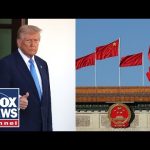The Panama Canal is a vital artery for American power and prosperity. Built by U.S. ingenuity over a century ago, it has long been a symbol of American strength and global leadership. Today, this critical waterway faces new threats from China’s aggressive expansion into Latin America.
The U.S. constructed the Panama Canal to secure dominance over both the Atlantic and Pacific Oceans. Teddy Roosevelt called it a cornerstone of national security, allowing swift naval movement and control over global trade routes. At its peak, the project employed massive American resources—steel from Pittsburgh, machinery from GE, and labor that reshaped Central America. The Canal’s completion in 1914 cemented America’s rise as a world power.
Nearly relies on the Canal to connect East Coast ports with Asian markets. It slashes shipping times and costs, fueling American industries from agriculture to manufacturing. The 2016 expansion allowed larger “Neopanamax” ships, boosting trade capacity. But this progress is now at risk.
Since Panama cut ties with Taiwan in 2017, China has embedded itself in the Canal’s infrastructure. State-owned companies like COSCO and Landbridge Group control ports at both ends of the waterway. These firms, linked to China’s military, could weaponize the Canal to spy on U.S. ships or disrupt trade during a crisis. Despite Panama’s denials, leaked deals show Beijing funding bridges, energy plants, and even a $900 million container terminal near the Canal.
The Trump administration is taking bold action to reclaim U.S. influence. Defense Secretary Pete Hegseth recently vowed to “take back the Canal from China’s grip,” pledging increased military cooperation with Panama and $5 million investments in naval infrastructure. A landmark agreement shifted control of key ports from Chinese firms to American company BlackRock, ensuring the Canal remains a “free and open” route. Critics dismiss these moves as alarmist, but history proves vigilance is necessary.
Panama’s president insists the Canal is “fully Panamanian,” but U.S. leaders know better. China’s Belt and Road Initiative has turned smaller nations into debt traps worldwide. Letting Beijing dominate the Canal would undermine American security and hand a strategic chokepoint to a hostile regime. The Torrijos-Carter Treaties grant the U.S. authority to defend the Canal’s neutrality—a right this administration will exercise if threatened.
The Panama Canal isn’t just a shortcut for ships. It’s a lifeline for American jobs, a shield against foreign aggression, and a testament to what patriots can achieve. Protecting it from Chinese encroachment isn’t optional—it’s essential to keeping America first.




